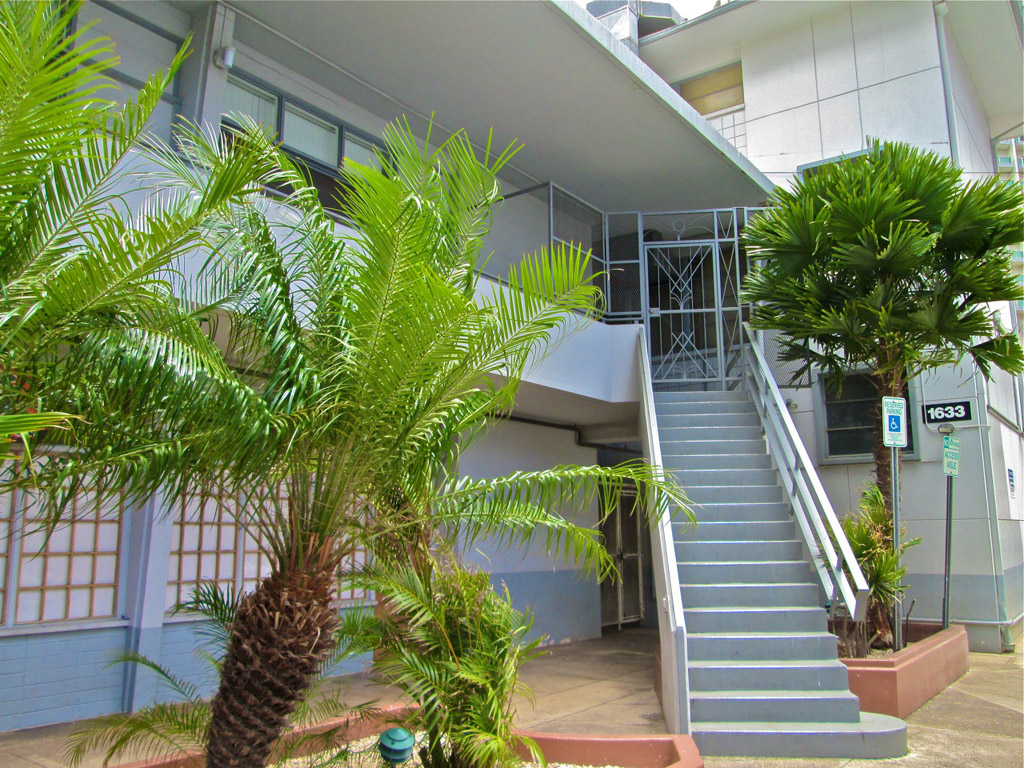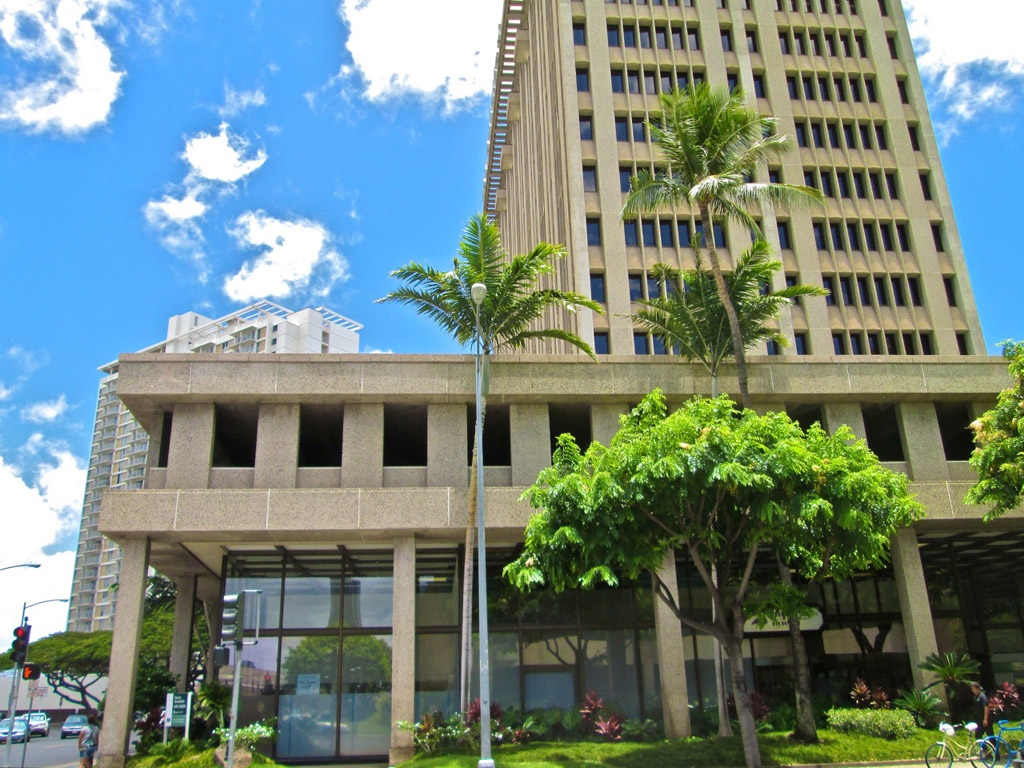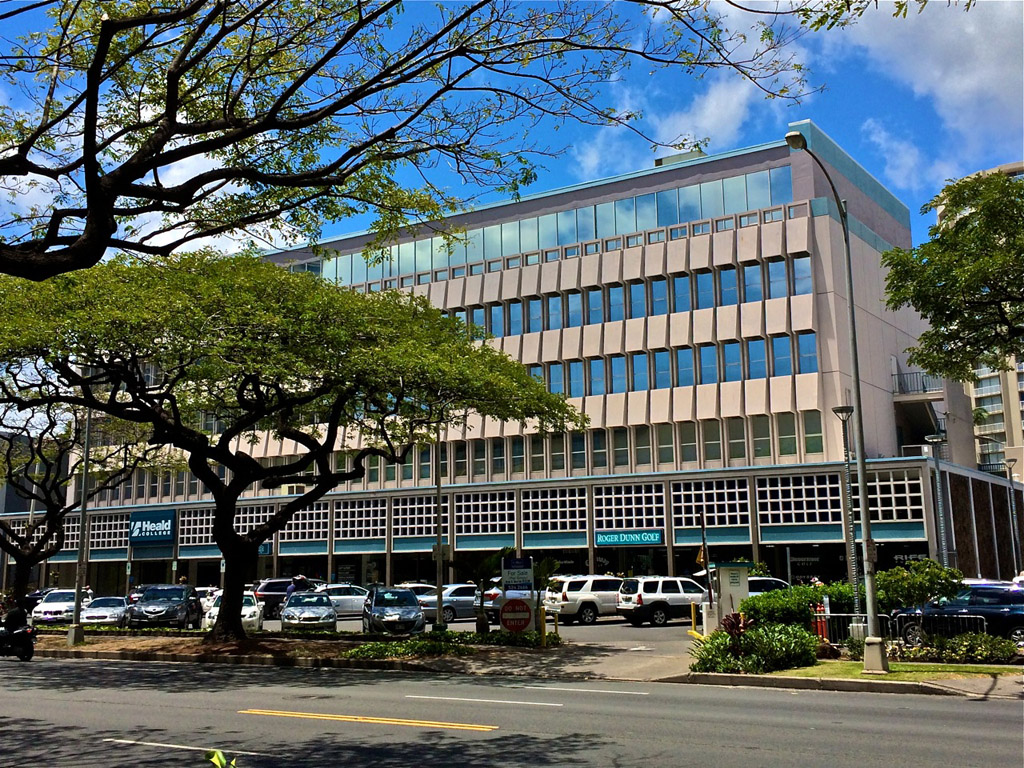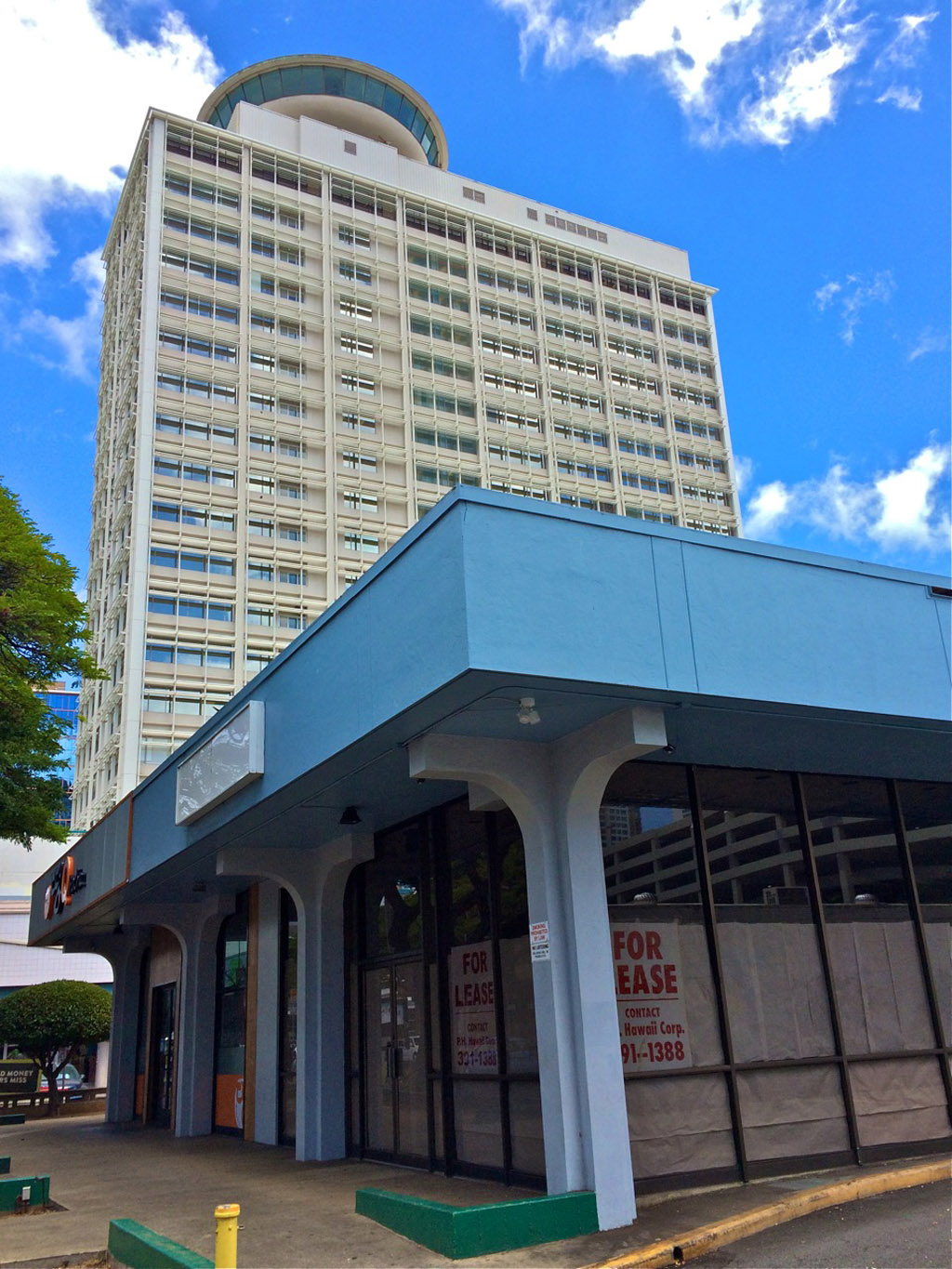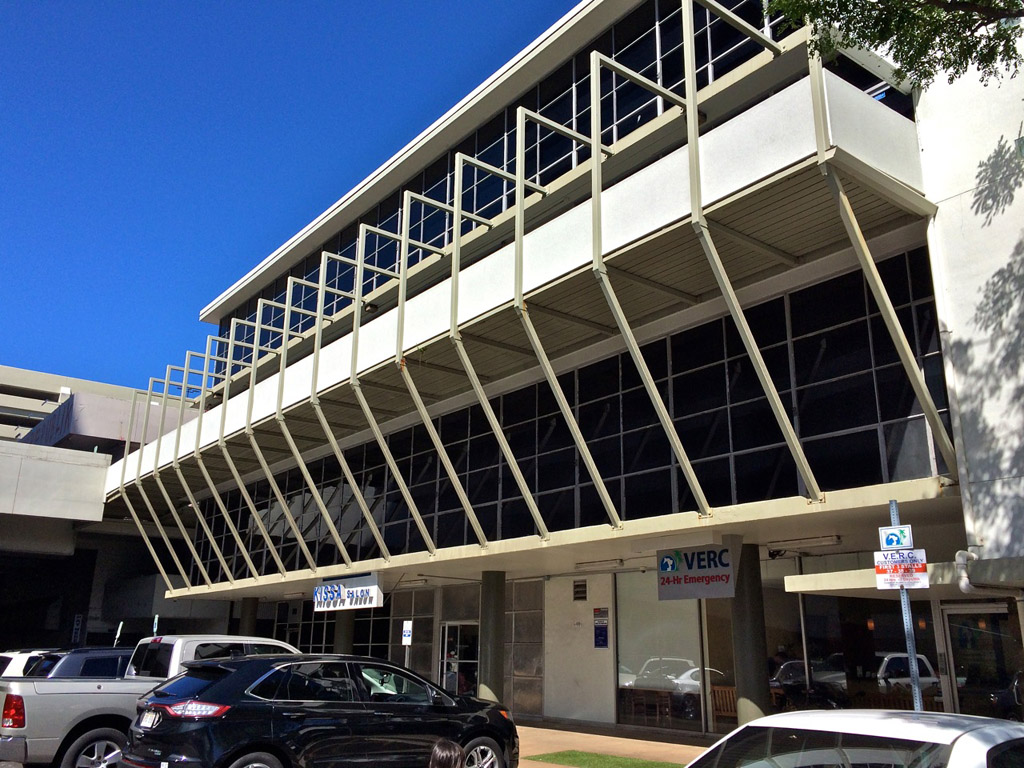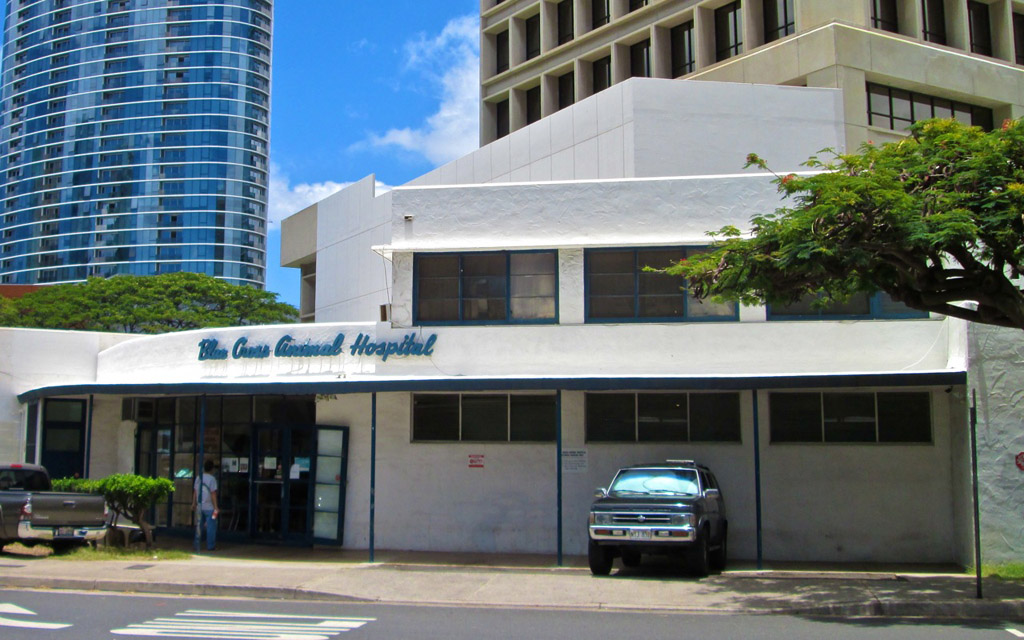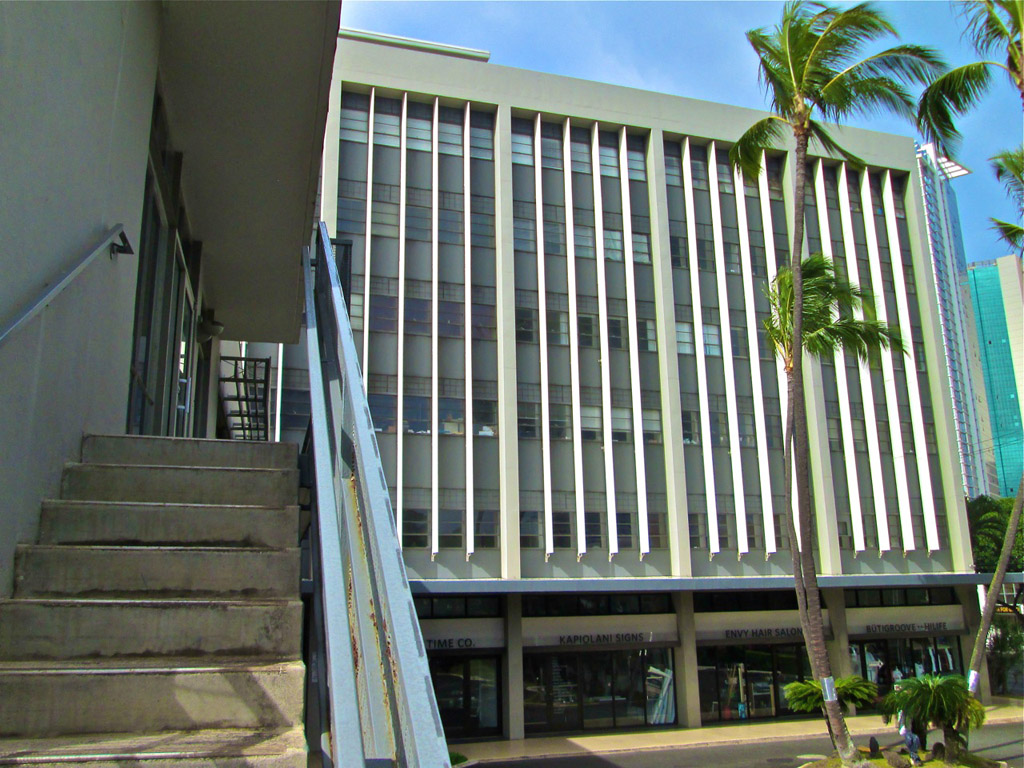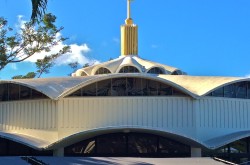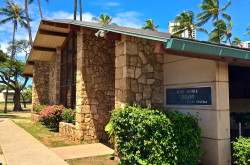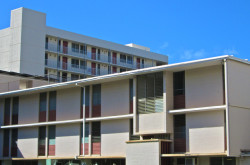Mid-century modern buildings
It’s been called the Miracle Mile of the Pacific, a reference to the mid-Wilshire district of Los Angeles where a plethora of deco, streamline moderne and mid-century modern architecture styles have come together over the years.
On Honolulu’s tree lined Kapi’olani Boulevard – between Kalakaua and King Streets – there are no less than a dozen modernist structures built at the height of the city’s expansion during the post war years into the late 1960s. This commercial corridor is well worth strolling through if you have a couple of hours.
Buildings have been identified by their original names with corresponding photos above… click on addresses below for Google Map locations.
Miyamoto Building (1631 Kapi’olani Blvd.) – This 2 and 3-story office building was designed by Law & Wilson in 1953 and sports recessed frontage with an extended roofline to provide shade. Along with louvered windows and outdoor access to offices it’s got a very tropical modernist vibe.
Boysen Paints Store (1661 Kapi’olani Blvd.) – Designed by Lemon, Freeth & Haines in 1949, this single-storey Kapi’olani Blvd. retail building now goes by the fitting name of the Kapi’olani Building and boasts beautiful stonework and a streamline look.
Chateau Blue Apartments (1617 Kapi’olani Blvd.) – Designed by Bauer, Mori & Lum and built in 1970, this 17-storey apartment building is now called the Ala Moana Tower Apartments and a great example of Hawaiian high-rise residential modernism.
American Savings & Loan Building (1600 Kapi’olani Blvd.) – Better known as the Pan Am Building, this brutalist office tower was designed in 1966 by George Hogan & Donald Chapman (completed in 1968) helping to launch their young architectural firm into the mainstream.
C.S. Wo Building (1500 Kapi’olani Blvd.) – Suggestive of the International Style but with it’s own tropical modernist influences, this former office building designed by Haver, Nunn and Jensen in 1965 is now home to Heald Community College.
Ala Moana Building (1441 Kapi’olani Blvd.) – If you love breeze blocks and 23-story buildings with circular restaurants on top then don’t miss this one, designed by Seattle architect John Graham in 1961, it’s a beautiful example of high rise tropical modernism.
Hawaiian Savings & Loan (1405 Kapi’olani Blvd.) – This former bank building, designed by William F. Cann in 1971, exhibits some New Formalist tendencies such as its classical columns, and is similar in style – but not in stature – to the American Savings Bank at Ward Ave. & Queen Street.
Kenrock Building (1400 Kapi’olani Blvd.) – The Kenrock office building by Lemon, Freeth & Haines, 1958, are a beautifully realized pair of stone, glass & concrete 2-story structures that are perhaps emblematic of America’s growing car culture in the 1950s since their parking lots are aptly incorporated into the building’s U-shaped design.
Seaboard Finance Building (1347 Kapi’olani Blvd.) – Designed by Merrill, Simms & Roehrig in 1956, this 4-storey office building was the first in Honolulu to utilize dark tinted plate glass windows to reduce glare. A real original!
Blue Cross Animal Hospital (1318 Kapi’olani Blvd.) – Wow, this little 2-story beauty which still functions as an animal hospital was designed by noted modernist architect Vladimir Ossipoff and built all the way back in 1938! It’s one of Hawaii’s earliest examples of modernist architecture and boasts a very streamline moderne look. Ossipoff even considerately included a pet drinking fountain on the building’s exterior.
Hawaiian Life Insurance Building (1311 Kapi’olani Blvd.) – Designed, again, by Vladimir Ossipoff, and completed in 1951, here’s a great example of the International Style melded with Tropical Modernist flourishes such as its vertical aluminum sun shade fins and use of indigenous materials. This 6-story building was the tallest in Honolulu at the time it went up; a classic!
Neal S. Blaisdell Center (Kapi’olani & Ward Ave.) – The address for this 1964 “spaceship” dome is technically King Street but since it sits at the corner of Kapi’olani & Ward Ave. we threw it in. Click here for more information on the Blaisdell Center.
Flamingo’s (871 Kapi’olani Blvd.) – Designed by Milton Akiyama in 1955, this former family restaurant used to boast a vintage neon sign and was painted pink, a natural for a place called Flamingo’s, right? Unfortunately these elements were removed and additions tacked on without any thought to the integrity of the original structure. Still worth a look, further along Kapi’olani.
Visited 11377 times, 4 Visits today

